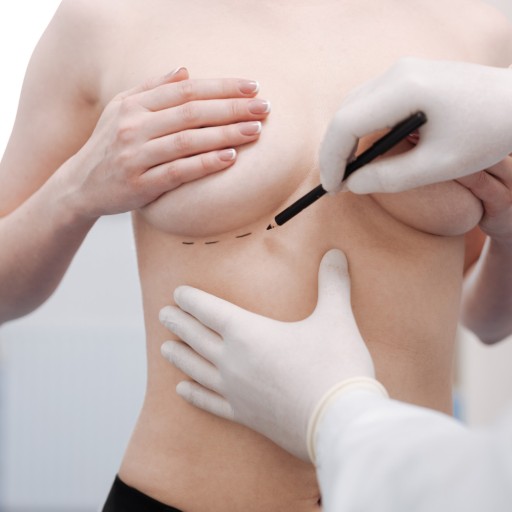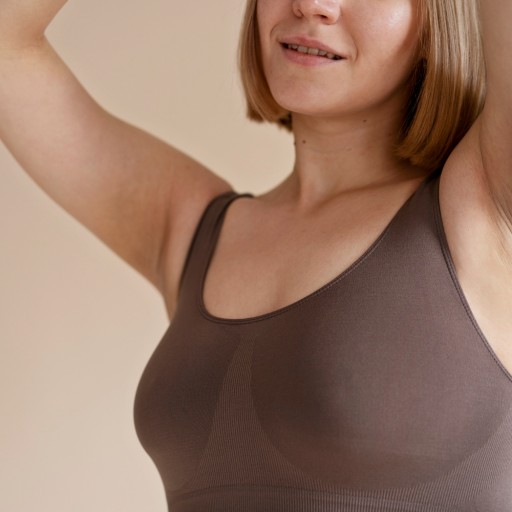Breast Reduction
6 results foundBreast Reduction: The Definitive Guide to a Life-Changing Procedure
Breast reduction surgery, also known as reduction mammoplasty, is a cosmetic and reconstructive procedure designed to reduce the size of overly large breasts, providing both physical and emotional benefits. For individuals who experience discomfort, pain, or self-consciousness due to the size of their breasts, breast reduction can significantly improve quality of life. In this article, we’ll explore what breast reduction is, the benefits, the procedure itself, and what to expect before, during, and after surgery.
What is a Breast Reduction?
Breast reduction surgery is a procedure intended for removing excess fat, glandular tissue, and skin from the breasts, making them smaller, firmer, and more proportionate to the body. The surgical goal is to have a more suitable breast that agrees with the general proportions of the patient's body, often leading to increased comfort with an enhanced cosmetic appearance. Though many people opt for reduction mammoplasty due to cosmetic issues, the surgery is mainly performed to help reduce discomfort due to large-sized breasts, which can cause back, neck, and shoulder pain.
Why Breast Reduction?
There are several reasons people opt for breast reduction surgery. The most prominent reasons include:
Physical Discomfort: Large breasts can make one feel very uncomfortable, causing chronic back, neck, and shoulder pains. Heavy breasts will eventually strain the muscles and spine, leading to poor posture and the development of headaches.
Breathing Difficulties: In some individuals, large breasts may lead to shortness of breath or difficulty breathing simply because of the weight and position of these breasts.
Skin Irritation: Large breasts may lead to skin irritation and rashes under the fold of the breast due to excessive perspiration or friction.
Psychological Benefits: A number of people with large-size breasts are feeling self-conscious or embarrassed, which complicates confidence and self-esteem. It can be helped in improvement of body image and boosting confidence.
Improved mobility and physical activity: Large breasts may restrict movement and give discomfort during physical activities such as exercising or running. Reduction of size improves flexibility and overall fitness.
The Procedure for Breast Reduction: What to Expect
Breast reduction is performed under general anesthesia, although in some cases, this may be performed with local anesthesia combined with sedation. The key steps involved in the surgery include:
Incision: The surgeon will make an incision in the breasts. The most common incision patterns are the "anchor" or the "lollipop" pattern: the first consists of a circular incision around the areola, another down to the breast fold vertically, and another horizontally along the breast fold; the second consists of a circular incision around the areola and another down from the areola. The extent of the tissue to be removed and the size and shape of the patient's breasts determine the choice between one sort of pattern or the other.
Excess Tissue Removal: After the incisions are made, the excess breast tissue, fat, and skin are removed by the surgeon. The remaining breast tissue is reshaped into a more youthful and balanced appearance.
Nipple and Areola Transposition: In most patients, the nipple and areola must be repositioned higher on the breast so that the appearance is natural. In some, this can be done with the nipple remaining attached to the underlying tissue, while others must have the entire nipple reattached.
Closing the Incisions: After the removal of excess tissue, the surgeon carefully closes the incisions with sutures. Scarring will occur, depending on the pattern of the incision, but these will fade with time.
The duration for the entire surgery usually ranges from 2 to 4 hours, depending on the complexity and extent of the procedure.
Who is a Good Candidate for Breast Reduction?
The best candidate for a breast reduction is one who is in good general health and has a realistic expectation about the result. The criteria to assess candidature include:
Overly Large Breasts: Individuals having disproportionately large breasts causing physical or emotional discomfort are the most common candidates for breast reduction.
Stable Health: Candidates should not be suffering from conditions that could interfere with the healing, such as uncontrolled diabetes or heart disease.
Psychological Preparation: The individual has to be psychologically prepared for the mental changes that might occur post-procedure, improved self-esteem, and better body image, among others.
Non-Smokers: Smoking impairs healing and increases certain risks of complications. Many surgeons require stopping smoking several weeks prior to and after surgery.
Possible Risks and Complications
As with any type of surgical intervention, breast reduction carries certain risks; fortunately, they are infrequent. Some of the possible risks are:
Infection: Infection is a risk for any surgical procedure. However, this may be minimized by following the post-surgical care instructions provided by the surgeon.
Scarring: Though scars fade with time, they are permanent. The degree of scarring depends on the incision pattern and your healing process.
Changes in Sensitivity: Some people may have temporary or permanent changes in the sensations of the nipple or breast following the surgery. It can also be associated with numbness or heightened sensitivity.
Asymmetry: While surgeons make every effort to create symmetric breasts, some variation in breast size or shape may occur post-operatively.
Blood Clots: The risk of blood clots, especially in the legs, is small following a surgery. Patients will often be encouraged to mobilize and walk around soon after surgery to minimize this possibility.
Breastfeeding: Sometimes, being able to breastfeed may be diminished with a breast reduction. This is something you would discuss with your surgeon if you have children in the future.
Recovery After Breast Reduction Surgery
Recovery from breast reduction surgery varies by individual, but most patients experience mild to moderate discomfort in the first few days following the procedure. Here's what to expect:
Post-Surgical Care: Patients will be given a surgical bra to support the breasts during the healing process. The bra should be worn as instructed to reduce swelling and support the breasts.
Managing Pain: Pain is usually controlled by prescription medication or over-the-counter pain medication. Most patients experience only a mild discomfort after the first few days.
Activity Restrictions: Patients need to avoid heavy lifting, vigorous exercise, and activities that require the chest muscles for several weeks. The surgeon will give specific guidelines as to when normal activities can be resumed.
Follow-Up Appointments: Follow-up appointments are scheduled regularly for checking on healing and to see that complications do not arise.
Scarring and Healing: The scars from the incisions will be visible at first, but generally, with the passage of time, they become less prominent, soften, and flatten out. Laser treatments for scar care, like silicone sheets or creams, may be recommended in order to minimize scarring.
Results and Long-Term Benefits
The results of mammoplasty reduction are usually immediately noticeable, with final results appearing after a few months as swelling resolves and breasts settle into their new shape. Many patients notice a significant improvement in their physical comfort, including a reduction in back, neck, and shoulder pain. The aesthetic benefits of regaining a more youthful, balanced breast shape often translate into increased self-confidence and a greater satisfaction with one's appearance.
Is Breast Reduction Right for You?
Deciding whether a breast reduction is in your best interest is a very personal decision that should be done with great care by weighing the benefits, risks, and recovery process. If you are considering breast reduction, schedule an appointment with a board-certified plastic surgeon who has much experience performing the procedure. They can evaluate your individual needs and offer their expert recommendation on whether you are a good candidate for surgery.
Conclusion
Breast reduction surgery offers a life-changing solution for individuals with overly large breasts, providing both physical relief and emotional benefits. With the ability to reduce discomfort, improve posture, and enhance body image, breast reduction can make a significant difference in one’s quality of life. If you’re struggling with the effects of large breasts and considering breast reduction, consult with a skilled surgeon to explore your options and achieve the results that best suit your needs.






